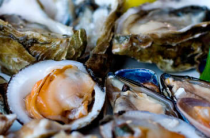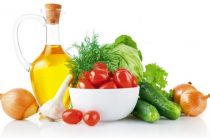The opinion that allergies are only hereditary is erroneous. With the development of modern technology and the deterioration of the environment, it is very easy to get such a disease in adulthood. It develops as a result of improper liver function and poor functioning of the body's immune system. In this case, hypoallergenic nutrition plays an important role, compliance with which is a prerequisite.
Causes of skin allergies
Human immunity is a rather complex system, which is the first to suffer from stress, irritants and failures. With her malfunctions, she lets know that at some point or through some event something went wrong. And if the immune system is weak, then an inadequate reaction will manifest itself in almost everything. So, allergies show themselves through skin rashes , first of all. A huge burden is placed on the immune system due to the rapid development of a diverse industry. And if the body has developed antibodies to certain substances over many decades, then new ones, such as modern fabrics, paints, flavors, medicines, are pathogenic agents.
 Everyone knows such an organ as the liver. It is considered a "filter" for our body. If it does not function enough, all toxins are not removed from the body, which gradually accumulate and look for a way out through the skin. This is how food allergies often manifest themselves. From this we can conclude that in the treatment of skin allergies, one should not forget about the prevention of liver diseases.
Everyone knows such an organ as the liver. It is considered a "filter" for our body. If it does not function enough, all toxins are not removed from the body, which gradually accumulate and look for a way out through the skin. This is how food allergies often manifest themselves. From this we can conclude that in the treatment of skin allergies, one should not forget about the prevention of liver diseases.
Allergens of our time
Probably no one will doubt that food allergies should be called the main one on this list. We all love delicious food. But not everything that tastes good is healthy. Fast food and long-term storage are the enemies of our body. Abuse of them will cause allergies even in a perfectly healthy person. Fans of citrus and red fruits should also be careful. Surely at least once in their lives they suffered from dermatosis, but did not betray this significance. In general, you should be careful with foods, especially with something new to your diet. Always watch the reaction of the skin to them. It is better to keep a food diary, where the entire daily diet will be entered, so that later there will be no problems with identifying the cause.
The second place is boldly occupied by an allergy to pollen or hay fever. Pollen, getting into the body and on the mucous membranes, serves as an allergen, and the immune system shows this as hives over the entire surface of the skin. With such a disease, there are often concomitant: allergies to house dust, pets. Do not forget about allergies to the sun, which is accompanied by terrible itching, burning and burns. If you do not take up treatment in time, then even with the slightest exposure to sunlight, photodermatosis will immediately appear on unprotected areas of the skin (hands, face, décolleté), and then spread over the entire surface.
Pollen, getting into the body and on the mucous membranes, serves as an allergen, and the immune system shows this as hives over the entire surface of the skin. With such a disease, there are often concomitant: allergies to house dust, pets. Do not forget about allergies to the sun, which is accompanied by terrible itching, burning and burns. If you do not take up treatment in time, then even with the slightest exposure to sunlight, photodermatosis will immediately appear on unprotected areas of the skin (hands, face, décolleté), and then spread over the entire surface.
Many chronic viral diseases lead to allergies. Well, do not forget about the factor of heredity. Many scientists have long proven that the emotional and psychological state of a person affects the work of his immune system. Therefore, it is recommended to avoid negative stressful situations.
How does an allergy manifest itself on the skin?
|
|
The most common type of rash is urticaria. These are blisters in the form of red papules. Outwardly similar to the sting of nettle grass. The rash is very difficult to trace - blisters appear and disappear each time in a new place. In diameter reach up to 15-20 centimeters. And upon contact with any chemicals, natural fabrics, synthetics, contact dermatitis occurs. It appears as a small punctate rash at the site of contact. Quite difficult to cure.
How to eat with skin rashes?
As soon as you notice a rash in yourself and are convinced that it is an allergy, switch to a hypoallergenic diet. With such a diet, it is necessary to completely exclude foods with a high degree of allergenicity from your diet. Such nutrition should be as balanced as possible: the daily diet includes a sufficient amount of protein, carbohydrates, vitamins and fats. You also need to limit yourself to salty foods, it is better to give up salt altogether for a while. It is worth drinking the prescribed amount of purified non-carbonated water (2 liters), which helps to remove toxins from the body. In terms of calories, the daily menu should not exceed 3000 kcal. Try to eat a little bit, but often (5-7 times), the so-called fractional meals.
In order to create a diet for yourself, you need to familiarize yourself with the prohibited, possible and permitted foods during the allergy period:
| Products with a high degree of allergenicity |
|
| Foods allowed in small doses |
|
| Foods that help with allergies |
|
Almost all dishes need to be boiled without the use of edible salt. If you decide to cook your own broth, then you need to change it 2-3 times, not only meat, but also fish. Eggs, when cooked, should undergo a maximum heat treatment - 15 minutes.
Some nutritionists recommend following the following steps in the diet:
- At the first stage, it is forbidden to eat food at all for one or two days. You can drink only purified non-carbonated water. The amount of water must be at least 1.5 liters.
- The second stage is the introduction into the diet of products that do not cause allergic reactions. This is yesterday's bread, vegetable broths, rice and buckwheat porridge. A prerequisite is the exclusion of allergenic products.
- If you notice a decrease in symptoms, then at the third stage it is allowed to eat boiled beef and chicken, some vegetables, not strong tea. You can also use biscuit cookies. At this stage, you should crush your food - eat up to 5 times a day.
First courses should be vegetarian only. Meat is best steamed. In no case should you eat what was cooked yesterday, because even when stored at a low temperature, fermentation processes occur. Only freshly brewed food! Any cereals should be prepared only with water, but not with milk. The use of casseroles (vegetables), puddings, carrot and potato pancakes cooked in olive oil is welcome.
Food diary: what is it?
Those who have ever experienced allergic manifestations have heard of a food diary. Its essence is to write down absolutely all the foods you eat, and any reaction to them. Such a diary is especially relevant with the re-introduction of previously excluded foods into the diet. The diary is kept for at least two months daily. With its help, the allergist will simply identify the allergen and prescribe the correct course of treatment. And the sooner you get started, the better for you.
How to lead it?
When entering a product in a diary, describe it. Just the names of the dishes, without their detailed description, do not make sense. For example:
- Bread: rye, sifted, buns, etc.;
- Fish: perch, cod, boiled, steamed;
- Cheese: "Russian", "Poshekhonsky", 50% fat, fat-free, cheese product;
- Milk: fresh, boiled, condensed, cow, goat;
- Eggs: soft-boiled, raw, boiled, yolk, protein.
It will not be superfluous to indicate their period and storage conditions. A prerequisite is the introduction of hours of food intake to the nearest minute. Allergic manifestations should be recorded with the same temporal accuracy. It should be noted that a repeated reaction is observed in the first 2-3 hours after taking the allergen. If you suspect a certain product, exclude it from the diet for three to four days. After the symptoms subside, try again in very small doses. With a newly appeared rash, you can be sure that it is he who is the culprit of all the troubles. Stop using this product for at least three months.
An example of keeping a food diary
| Time of receipt | Menu | grams | Symptoms | Suggested food allergens |
| Monday | ||||
| 8:00 |
|
|
||
| 11:30 |
|
|
Rash in the form of small pimples on the cheeks. | Potato - ? |
| 15:00 |
|
|
Same symptoms, no worsening. | |
| 19:00 |
|
|
The appearance of a rash on the hands. | |
Some misconceptions about diet for skin allergies
- Lifelong dieting. It is a myth. The diet is observed only during periods of exacerbation and to identify the allergen product. It is also worth sticking to it at the time of treatment. This will take 1-2 months. Then all the foods you are familiar with are gradually introduced into the diet.
- Many people think that the diet is only for adults. This is wrong. Doctors have developed many hypoallergenic diets for children of all ages.
- There is an opinion that during this period some types of alcohol are allowed that do not contain ethyl alcohol. It is worth noting here: alcohol, in any form and with any composition, is strictly prohibited.
- With complaints of allergies, they usually go to a dermatologist or allergist. But doctors in these categories cannot prescribe the right diet for you. It is compiled only by a nutritionist based on the results obtained and a conclusion from a dermatologist.











